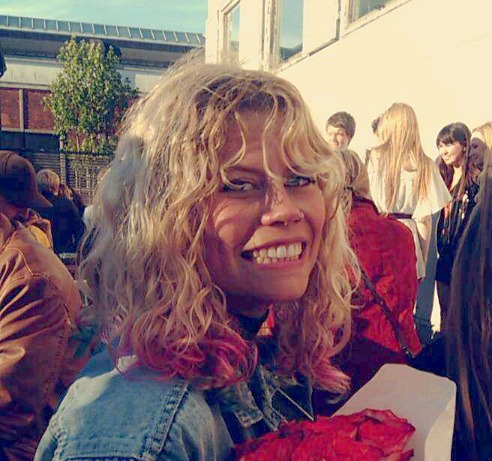The genre of animated films for children can do much more than costume boys as super heroes or invest girls with big eyes and long eyelashes. They can tell stories of all scales and spark important conversations in the sitting room. Meet the designer, Sofie Lind Mesterton. In her final project, a shark and a jellyfish cast light on the important relationship between siblings. The project also tackles classic gender clichés.
What is your final project about?
My graduation project is called ‘Seablings’. It is a concept for a series of animated films targeted at between the ages of 4 to 7. I came up with the story and the visual design. It is the story of a shark and a jellyfish and their experiences in a fantasy underwater world, where they grow up as close siblings. Siblings can be very similar or hugely different, but frequently it seems that they are made for each other exactly the way they are. You are formed by your family or the people closest to you, no matter how unfair your little sister or big brother might be. I want to present this special relationship for children, from the perspective of both the elder sibling’s and the younger sibling’s point of view, in an exciting, fantasy setting. The series aims to tackle the minor and major issues and dilemmas that can occur when children are growing up together. My product is an example of an episode in animated storyboard form, where you can view a book online that presents the concept of the series with illustrations and descriptions of the characters, universe and episodes.
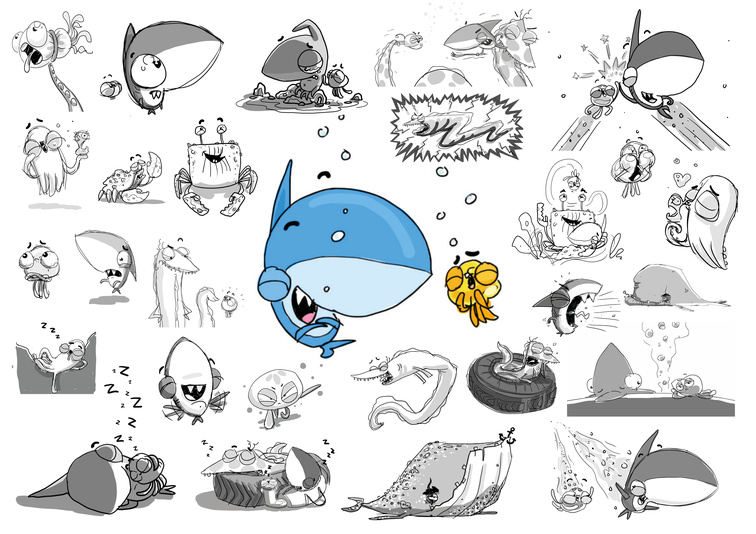
What was your motivation for this project in particular?
I want to work in the field of cartoon and animation films and create stories through pictures. That is why I chose to create a project, in which I could consolidate all the things I find exciting to work with: story writing, drawing and developing universes and characters, creating storyboards, animating etc. It is both expensive and hard to get animated projects off the ground in Denmark. That is why lots of the cartoon films and computer animations children watch every day on DR, Netflix etc. are imported – often from the United States or England. I hope that more films with Danish content will be made. Using my visual design skills, I want to make something relatively cheap and straightforward, while at the same time daring to be colourful and large-scale. The project is aimed at children, who, I believe, as a group are often not taken entirely seriously. An important part of the project was to have girls in the leading roles, because we do not often see that in animated films aimed at an audience of boys and girls. The theme of the series is also very close to my heart, because it is inspired by my sister and me growing up together. I believe in starting with things I have experienced personally and then building creatively on that: ending up, for example, with a shark and a jellyfish at the bottom of the ocean.
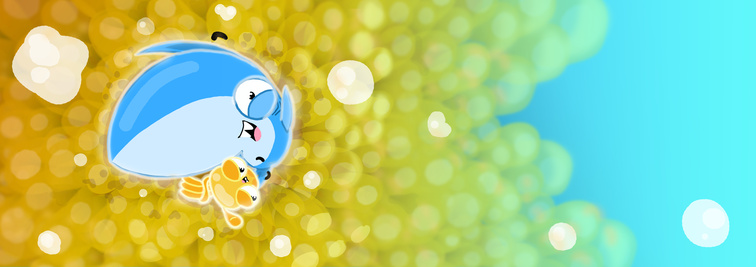
In what way does your project contribute something new to the area you have been working on?
Growing up, I watched lots of cartoon and animated films, and always identified with the main characters, the role models: my childhood heroes. Last year it dawned on me that they were nearly all male, and that when I work on films and stories, I always start of thinking of main characters as male. I began to investigate why, and how I could actively break this pattern. Especially in animated films and series with non-human characters, the imbalance is very large. We have become accustomed to the fact that the universal or ‘neutral’ version of a character – a dog, a robot, a shark – is a boy, while the girl version has to have stylised features such as eyelashes, a hairdo and a ‘girly’ colour. That is why, for the wide audience, main characters in films are boys. I wanted to come up with a project, in which girl characters are just as cool as boy characters and face exactly the same dilemmas and adventures. I wanted to work actively on a series about two girls, but in which they are as ‘neutral’ as if they had been boy characters. Children should be able to recognise themselves in the characters and their actions, instead of reacting to whether they are blue or pink, or whether or not they have eyelashes.
Where do you imagine your degree project will make a difference?
I think it is an exciting to take a look at the relationship between two siblings instead of the relationship between two best friends, which most series are about. For me, the relationship with my sister was the most important thing in my childhood, and so many things happen between siblings, which are hard to understand, when you are young. All you know is that the other one can be extremely stupid, but that ultimately you cannot avoid each other for more than a couple of hours. It could be interesting to see whether siblings in the target audience can recognise themselves - or perhaps especially their ‘counterpart’ - and feel like watching it together as a family, and chat about how being together can be both fun and hard. I also hope that children will find it lots of fun to follow the adventures of the shark and the jellyfish.
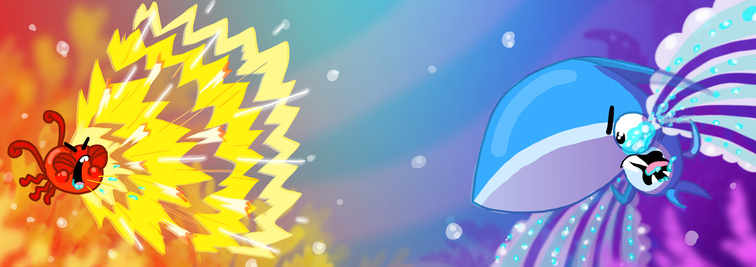
To which UN goals does your project relate, and why?
My project relates to UN goal Number 5: Gender Equality. Not because we had to, but because last year I studied the aforementioned gender imbalance in animated films and series for children. In family films for the wide audience, many main characters are boys - humans or animals - while the girls are supporters or supply the love interest. This situation makes films and series with girl main characters niche, while films and series with boy main characters are for everyone. Yes, we may be talking about a genre, in which characters can be ants, teddy bears or sharks, but we look differently at the opportunities a boy or girl has. That is what I want to work actively on. I want to show that films that tackle themes that relate to everyone can have any gender of protagonist. My goal is for the audience not even to think that the series is actually about two girls.
What methods did you use when working on your project?
I based the concept of the series on two of my previous projects: a theoretical project about gender in animated film form, and a tool-oriented project, in which I taught myself how to use the 2D animation programme, Toon Boom Harmony. I also interviewed members of my target audience in a primary school class about their preferences and habits when it comes to TV and film. These children also watched the final result and their feedback was very positive. I also received guidance and feedback from people who work in the field of computer games, and animated series and films for children.
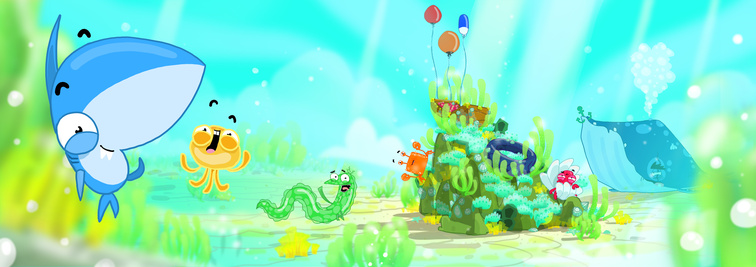
What sort of development potential do you think your final project has?
I hope my jellyfish and shark will have some sort of future - whether as a series, a game, an app or emojis - time will tell. In any case, I can use my graduation project to show that I work hard - and that is always useful.
What do you think is your greatest strength as a KADK design graduate?
The School of Design has made me very independent. I quickly discovered that it was hard to get classes related to cartoon and animated films, given that the production design course concentrated on reality films in collaboration with the Film School. So I quickly learned how to bias all my courses and projects in my favour and to seek out people outside the School. I think that tenacity and independence are important attributes in a profession, in which it is hard to get jobs, and there are many talented people available. Talent is great, but hard work and a sense of direction are even better.
What are the most enjoyable and the most difficult aspects of designing the way you do?
The hardest and most fun aspects are getting jobs. You are often employed on short contracts, but when you are, the work is extremely intense, instructive and fun. Coming up with things and seeing them come to life are sort of addictive. It is also great working together with other people to achieve a common goal.
Where do you see yourself career-wise in five years’ time?
I hope by then I will have been involved in loads of film productions in a number of different creative roles.


